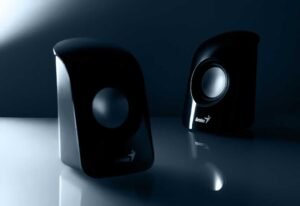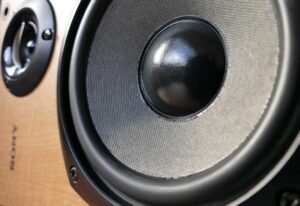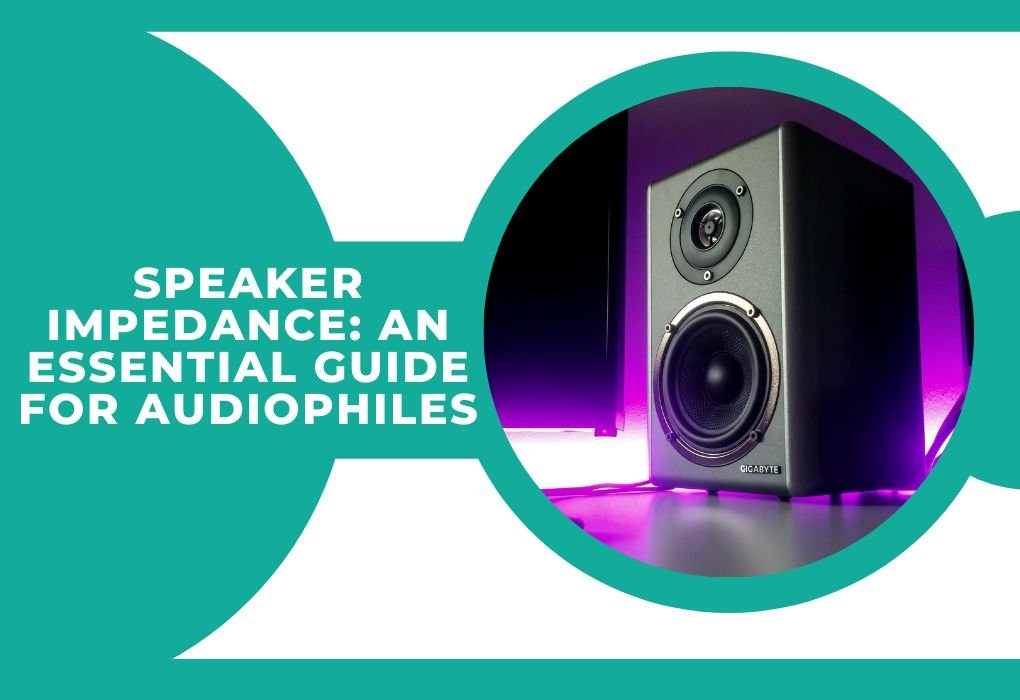We all desire the best regarding sound quality, whether rocking out to our favorite bands or indulging in a cinematic experience. An often-overlooked aspect of achieving optimal audio performance is understanding speaker impedance. What is it, and why should you care? This guide elaborates depths of speaker impedance, unearthing the facts and busting the myths to help you make better-informed decisions about your audio setup.
Table of Contents
ToggleWhat’s the Difference Between Resistance and Impedance?
Before we delve into speaker impedance, it’s essential to clarify the difference between them, two terms often used interchangeably but mean different things. Resistance refers to the opposition to direct current (DC), while impedance is the opposition to alternating current (AC).
Resistance is a fairly straightforward concept governed by Ohm’s Law. In contrast, impedance is a more complex, factoring in resistance and reactance (the resistance offered by capacitors and inductors in an AC circuit). When discussing speakers, we talk about impedance because speakers work with AC signals.
What is Speaker Impedance?

Speaker impedance is a complex but crucial concept in audio equipment. In essence, speaker impedance measures how much a speaker resists or impedes the electrical signal from your amplifier.
This resistance, measured in ohms, influences the interaction between your speakers and amplifier, affecting sound quality, volume, and potentially the lifespan of your equipment.
Why Does Speaker Impedance Matter?
So, why should you care about speaker impedance? Simply because speaker impedance impacts the speaker’s performance and longevity. Impedance is a crucial factor to consider when matching speakers with an amplifier or receiver.
The impedance of your speakers dictates how much power they can handle, and mismatching can result in poor sound quality or, worse, damage to your equipment.
Speaker Impedance and Amplifier Requirements

The delicate dance between a speaker and an amplifier is deeply influenced by impedance. Amplifiers have rated impedance and are designed to perform optimally when paired with speakers of the same impedance.
If the impedance is too low, the amplifier will work harder, potentially overheating and damaging. On the other hand, if the impedance is too high, the amplifier may not be able to deliver sufficient power to the speakers, resulting in quieter, less dynamic sound.
Is Higher Impedance Better for Speakers?
The notion that higher impedance equals better sound quality is a common misconception. The reality is that both low and high-impedance speakers have their pros and cons, and the “best” impedance depends on your audio setup and requirements.
High-impedance speakers are less demanding on your amplifier but might need more volume if your amplifier needs to be more powerful. On the other hand, low-impedance speakers can deliver more volume and dynamic sound, but they demand more power, which can stress your amplifier if it’s not up to the task.
How is Speaker Impedance Measured?

Speaker impedance is measured in ohms (Ω), representing the Greek letter Omega. It’s not typically something you can measure at home since it varies with the frequency of the signal passing through the speaker.
Manufacturers usually provide an ‘average’ impedance rating for their speakers, which gives you an idea of the kind of amplifier that would be a good match for them.
How to Calculate Speaker Impedance?
When dealing with multiple speakers, things can get tricky. You add the individual impedances together depending on whether your speakers are wired in series. For instance, if you have two 4-ohm speakers in series, the total impedance is 8 ohms.
However, the calculation is more complicated with speakers wired in parallel. The total impedance can be calculated using the formula 1/((1/Z1)+(1/Z2)..(1/Zn)), where Z refers to the impedance of each speaker.
Can Speaker Impedance be Changed?

The inherent impedance of a single speaker can’t be altered as it’s a characteristic determined by the speaker’s design and manufacture. However, as mentioned above, the total impedance of your setup can be influenced by the way you wire multiple speakers together.
Remember that changes should be made carefully to avoid mismatches that could harm your audio equipment.
Check more : Headphones over Hoodie: A Comprehensive Guide
Does Speaker Impedance Affect Sound Quality?
Impedance does indeed play a role in sound quality, but it affects indirectly. High impedance can reduce the amplifier’s ability to accurately control the speaker’s motion, possibly leading to less precise sound reproduction.
Conversely, low impedance can overburden the amplifier, causing it to distort the signal or even fail, impacting sound quality negatively. Thus, correctly matching speaker impedance to your amplifier is critical for the best sound quality.
Does Speaker Impedance Affect Volume?

Just like with sound quality, impedance can indirectly influence the volume of your speakers. Speakers with low impedance can draw more power from an amplifier, potentially producing a louder sound.
However, this only applies if your amplifier can handle the increased power draw without distorting the signal or overheating. Conversely, high-impedance speakers might not draw enough power from the amplifier, resulting in softer volume.
Why Do I Need to Know About Speaker Impedance?
Knowing about speaker impedance empowers you to make informed decisions when setting up your audio system. It helps you match your speakers and amplifier effectively, maximizing sound quality, protecting your equipment, and saving you some hard-earned cash in the long run.
Understanding speaker impedance might seem daunting for tech geeks, but as you can see, it’s an accessible concept with real-world implications for all music and movie lovers.
Speaker Impedance & Power Demands
As discussed earlier, speaker impedance has a direct impact on power demands. So, when choosing your audio setup, you’ll need to consider both the impedance of your speakers and the power capabilities of your amplifier to ensure they are compatible.
The ultimate output goal is to create a balanced system that delivers excellent sound without straining your equipment.
Speaker Impedance Specifications (Nominal, Actual & Minimum)
When looking at speaker specifications, you’ll likely come across three terms relating to impedance: nominal, actual, and minimum.
The nominal impedance is the manufacturer’s average value, typically 4, 8, or 16 ohms.
Actual impedance varies with the signal frequency and might be higher or lower than the nominal value.
Finally, the Minimum impedance is the lowest point at which the impedance might drop – a crucial figure as this is where the highest power demand from your amplifier occurs.
FAQs :
To assist you further, here are some commonly asked questions about speaker impedance, along with concise, easy-to-understand answers:
Can I connect speakers with different impedance to the same amplifier?
While it’s technically possible to connect speakers with different impedances to the same amplifier, it’s generally not recommended because it can strain the amplifier and degrade overall sound quality.
Can mismatched speaker impedance damage my amplifier?
Yes, mismatched speaker impedance can potentially damage your amplifier. If the speaker impedance is too low, it may draw excessive current from the amplifier, causing it to overheat or even fail.
How can I find out the impedance of my speakers?
Speaker impedance is usually indicated on the back of the speaker itself or in the user manual. If you can’t find this information, you can contact the manufacturer directly for specifications.
Are High-impedance speakers better than Low-impedance speakers?
Neither high nor low-impedance speakers are inherently “better.” The best choice depends on your specific audio setup and amplifier capability.
High-impedance speakers are easier on your amplifier but may lack volume. Conversely, Low-impedance speakers can provide more volume and dynamic sound but require a more capable amplifier.
Does speaker wire affect impedance?
While speaker wire doesn’t directly alter the inherent impedance of a speaker, it can affect the total impedance of your audio system.
Very long or thin speaker wires can add circuit resistance, increasing impedance.
Can I use a 4-ohm speaker with an 8-ohm amplifier?
Using a 4-ohm speaker with an 8-ohm amplifier can cause the amplifier to overwork, potentially leading to overheating and damage. It’s always best to match speaker and amplifier impedances as closely as possible.
What is “nominal” impedance?
Nominal impedance is the average impedance value the speaker manufacturer provides. It’s a rough guide to match speakers with suitable amplifiers, but the impedance may depend on the audio signal’s frequency.
Conclusion :
Understanding speaker impedance can seem daunting, but it’s crucial in achieving the best possible sound quality from your audio system. Considering the key points and FAQs covered in this guide, you’ll be well-equipped to make informed decisions when buying or setting up your speakers and amplifier.
Enjoy the enhanced listening experience that knowledge brings!


